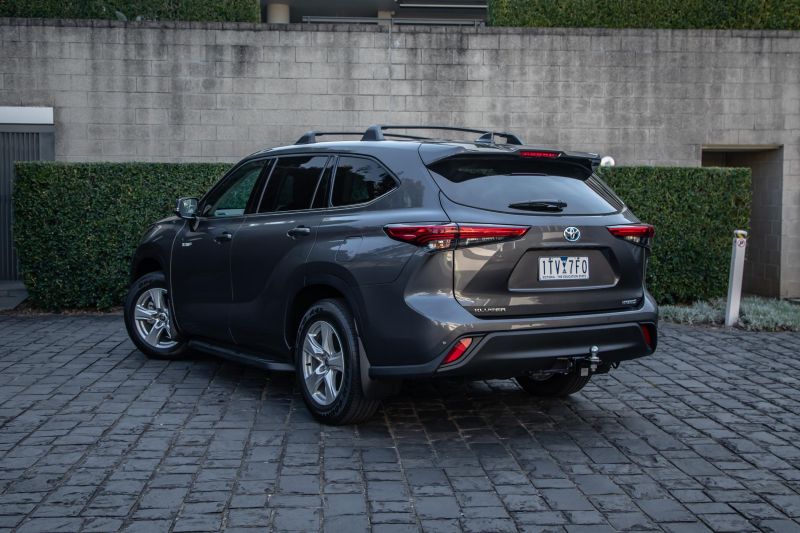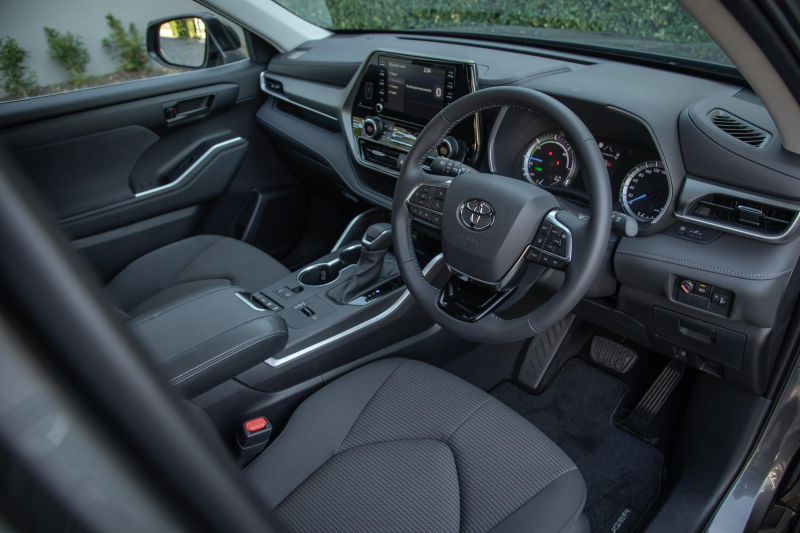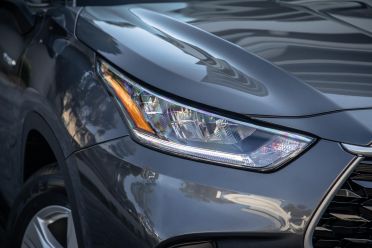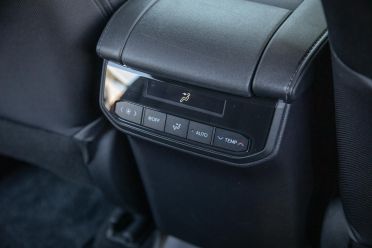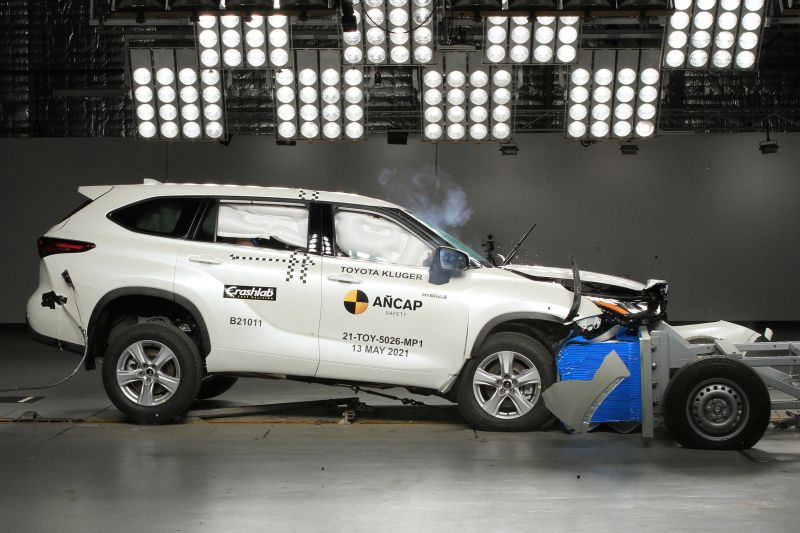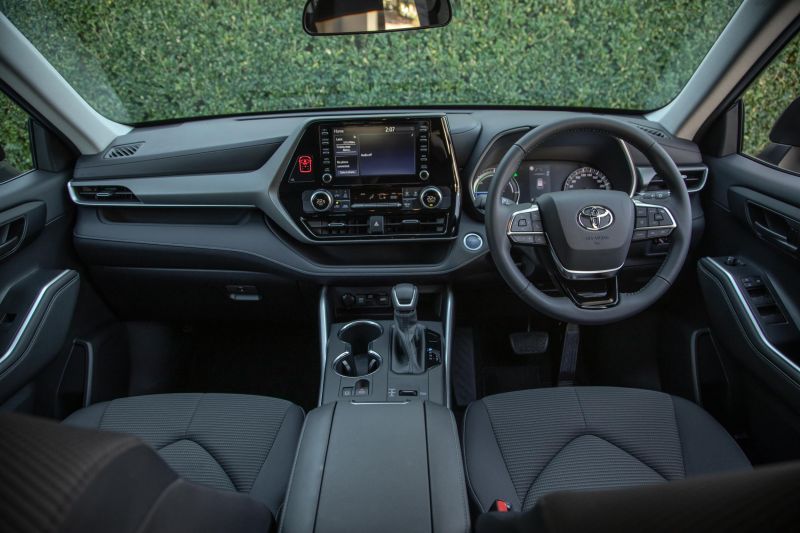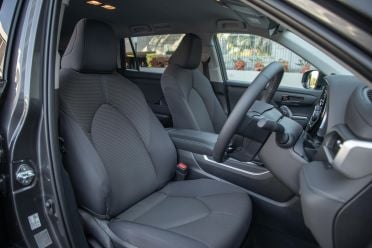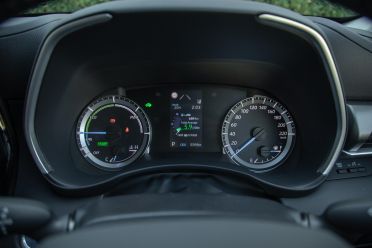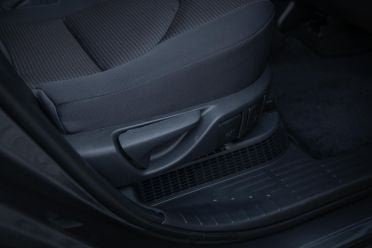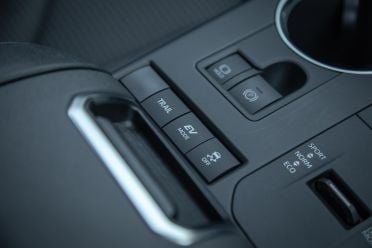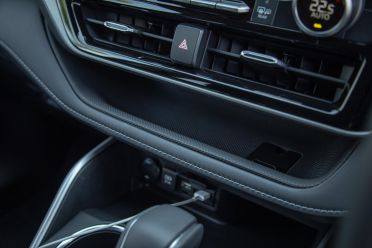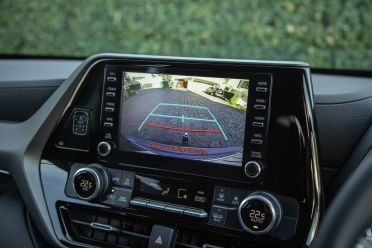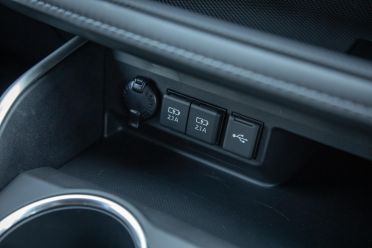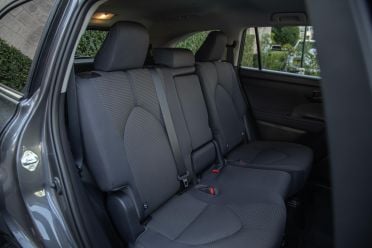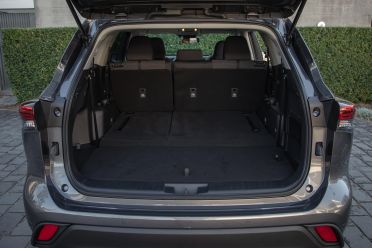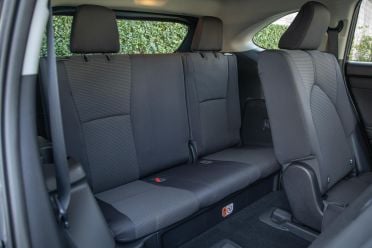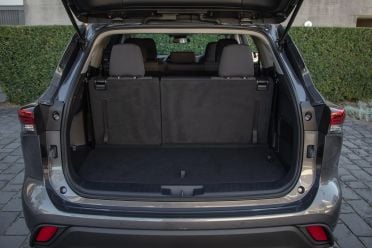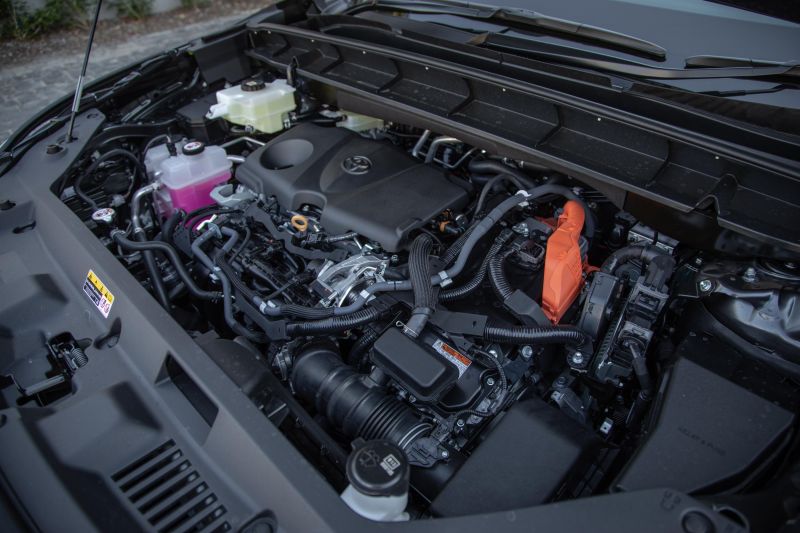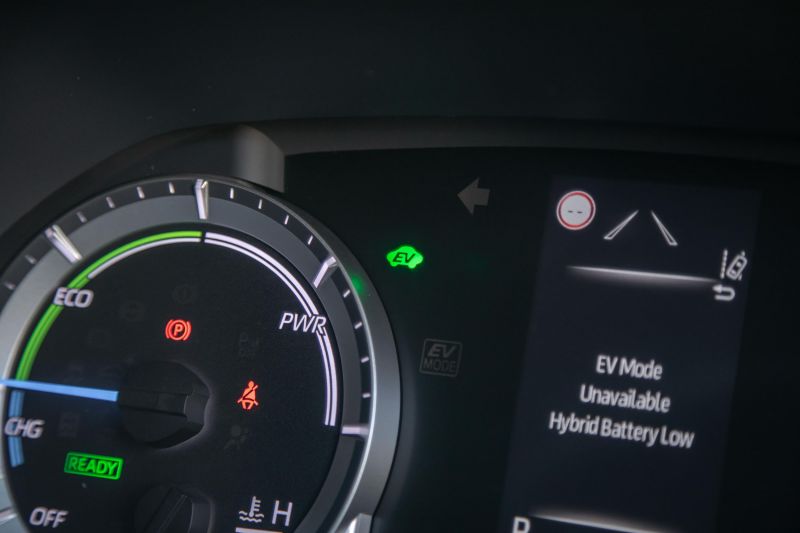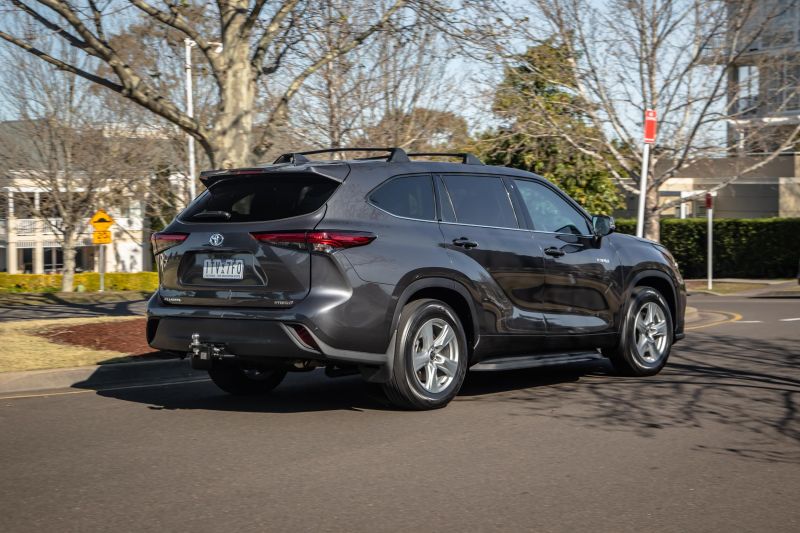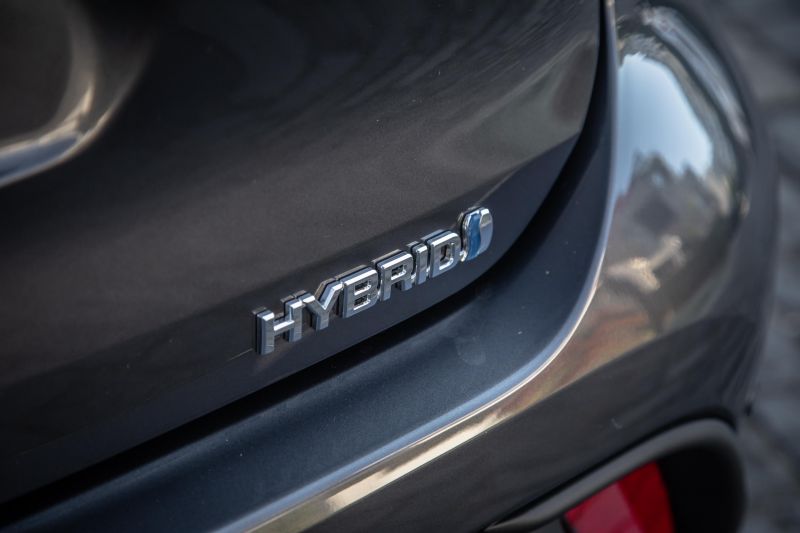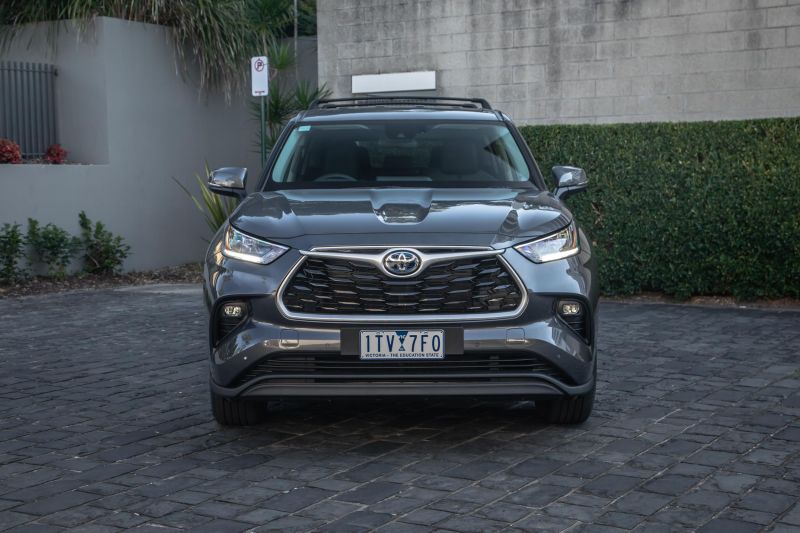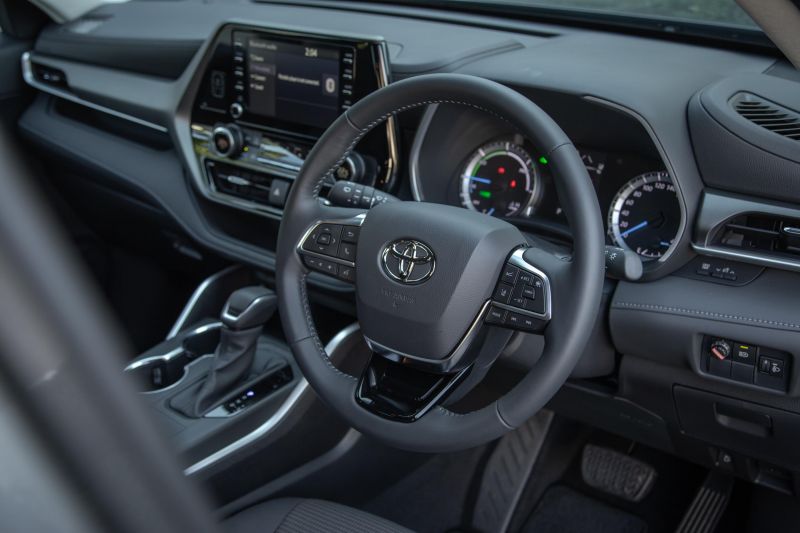A new look, new interior, new platform, and the adoption of hybrid petrol-electric motivation.
The reimagined Toyota Kluger, the most popular large crossover in Australia, rides along with a nice buzz in its wheel tracks. Of the recently launched nine-variant line-up, it’s fair to say our subject here will be in the crosshairs for many.
The 2022 Toyota Kluger GX combines entry-level equipment levels with Toyota’s hybrid powertrain and ‘E-four’ branded on-demand all-wheel drive.
Eyeing off the entry grade of any model range comes with a judgement: is what you lose in equipment compensated for handsomely enough, not just in pricing but with how much inherent goodness is built into the family DNA?
With its new TNGA platform and rejig of much of the rest of the package, the ‘cheapo’ Kluger comes with fairly high hopes.
How good is it? Let’s find out.

How much does the Toyota Kluger GX AWD Hybrid cost?
The petrol-electric version of the base GX clocks in at $54,150 before on-road costs, or a little under $59,000 drive-away sans options using Toyota’s online configurator.
It’s $2500 pricier than the petrol V6 powered AWD ($51,650) and $6500 more expensive than the front-driven petrol V6 version ($47,650) of the GX.
Prefer more fruit but uncommitted on powertrain? You can slip into the mid-spec GXL as a V6 FWD for $56,850 – a $2700 higher outlay on list pricing. The same hybrid motivation in GXL trim commands $63,350 before on-roads, $9200 more than the equivalent GX.
If you’re really wedded to the Toyota brand – and many are – there are other models on offer in form of the ute-based Fortuner GX AWD, at $49,080 list, or the diesel-powered Prado GX AWD at a pricier $59,840.
As options go, the Kluger sit amongst its stablemates as the more on-road-centric, comfort-leaning, family-pampering choice.
You’d logically cross-shop the Hyundai Santa Fe Elite ($54,300) and Kia Sorento Sport+ ($53,850), though this pair line up more cleanly against the Kluger GXL FWD – each comes with an all-wheel drive option, but no hybrid option… yet.
Hyundai’s Palisade? At $55,000 now for a base petrol front-drive model, it’s not really a neat match-up for our particular tester, but if you’re after big space for your money it’s one of the most logical vehicles to cross-shop.
As for the Mazda CX-9, you can slip into the base Sport AWD for $49,990 plus on-roads, undercutting the Toyota – again, not quite the neatest match-up, but proof that offering petrol-electric power in Kluger is a unique selling point.
The only option is premium paintwork. Outside of no-cost black, there are seven different finishes available for $675.
What do you get?
The GX fit-out is solid enough for an entry version. And given how much metal, glass, rubber and hybrid hardware you get it’s fair to expect that the goodie bag isn’t exactly gushing with indulgence.
Outside, the entry Kluger gets 18-inch allow wheels, automatic LED headlights with auto high-beam, LED tail lights and daytime running lights, front and rear parking sensors, a static reversing camera, keyless entry and go, heated power-folding mirrors, rain-sensing wipers, and rear privacy glass. Active cruise control is standard.
Inside, the GX gets cloth seat trim and mechanical seat adjustment, a 4.2-inch colour driver’s screen, Hybrid-exclusive three-zone climate control (V6s get manual air con), five USB outlets (four for power, one for connectivity), dual 12-volt outlets and a sliding second-row seat bench.
Infotainment is an 8.0-inch colour touchscreen system with DAB+, six-speaker audio and wired Apple CarPlay and Android Auto, though you’ll need to stump up for the GXL to get proprietary sat-nav.
For full details on the 2021 Kluger range check out our full pricing and spec story.
Is the Toyota Kluger GX AWD Hybrid safe?
The entire Kluger range earned a five-star ANCAP rating from assessment conducted in June 2021.
The reimagined crossover scored 90 per cent and 88 per cent for adult and child protection respectively, with 76 per cent for vulnerable road user and 82 per cent for safety assist. See our news story here for the full deep dive.
Systems fitted include autonomous emergency braking with pedestrian and daytime cyclist detection, junction AEB, lane departure warning, active lane keeping, rear cross-traffic alert, road sign assist and Emergency Steer Assist that recognises vehicles, bikes and pedestrians and “helps support you taking evasive action”.
Its suite includes hill-start assist though the downhill assist control fitted to petrol variants isn’t included in the hybrid versions’ specifications list.
Seven airbags are standard, including a driver’s knee bag and full three-row curtain coverage, as well as ISOFIX and top tether child seat anchor points for the second row of seating.
What is the Toyota Kluger GX AWD Hybrid like on the inside?
First thing first: with its low side step and modest seat base height, the Kluger is one of easiest big wagons to climb into and out of. This is a big deal for many buyers and a design feature not by accident.
Once inside it feels big, airy and perhaps not any practicably roomier than the old Kluger.
The styling brief is, well, Toyota: more interesting than handsome, especially the dash fascia and almost oversized touchscreen housing array, which attempts to modernise the Kluger cabin and barely gets away with it.
As we’ve reported prior, versions of this crossover overseas get huge 12-inch screens – though in base GX trim as tested here, the 8.0-inch system is perhaps fitting.
The Kluger is on the more coherent side of Toyota cabin design. There’s certainly a consistency to the graphics, colours, labelling of the controls, and the displays that’s lacking elsewhere in the brand’s range, and there’s more than a little Lexus creeping into the look and feel of some of the switchgear.
A shame, then, the infotainment shortcut buttons appears dragged out of a past era.
Infotainment itself is fine and somewhat modest in look, speed and breadth of content. To parrot our Grande hybrid review, it’s a shame so much of the Kluger under the skin has moved forward and the most conspicuous piece of interior technology hasn’t.
Still, smartphone mirroring works well enough and the audio quality is decent enough, while the reversing camera view is large and reasonably clear.
There’s no sat-nav, which is no problem given Apple CarPlay and Android Auto connectivity, as long as you’re not creating a fresh search outside of mobile phone reception.
The mechanically-adjusted front seats are big and comfy, and the cloth trim is actually quite pleasing.
It’s an easy machine to settle into and soak up the tyranny of distance without discomfort or fatigue. A real lure for the hybrid version is that it gets three-zone climate control, which is fitting for any well-formed family hauler.
The new Kluger packs an extra 6cm of wheelbase to yield some benefits in row-two roominess, which is generous and properly friendly for even taller adults.
Knee, shoulder and headroom are all more than ample and the near absence of a tail-shaft hump in the floor offers plenty of foot space and through access. Rear climate control and dual USB ports are fine inclusions for a base variant.
The 40:60 split allows adjustment to taste and decent access to row three, which is sized well enough for kids but is a bit cramped for adults save for desperate measures. The rearmost seating does stow neatly into the floor and the Kluger does make one helluva five-seat wagon with plenty of space anywhere.
Worth highlighting is the hybrid Kluger loses no luggage space against petrol versions, so whichever way you go the 241-litre boot as a seven-seater converts to 552 litres as a fiver and 1150 litres as a surrogate two-seat van.
All up, the Kluger is smart, pleasing and solid enough in fit-out to suit its price point.
What’s under the bonnet?
The internal-combustion side of the Kluger hybrid features a high-compression (14.0:1) 2.5-litre petrol four producing 142kW at 6000rpm and 242Nm at a quite high 4400rpm point.
Unlike the petrol V6 engines, which run on 91 RON, this hybrid inline four requires 95 RON fuel.
The engine is paired with a trio of electric motors, two up front outputting 270Nm and one at the rear of the driveline producing 121Nm.
Battery power is a nickel-metal hydride type and, typical for Toyota’s broadly commercialised hybridisation, it’s a closed-circuit design, no plugging in required. Transmission of choice is a continuously-variable type.
Combined system power is 184kW, which is down against the petrol 3.5L V6 alternative’s 218kW. Toyota doesn’t advertise a peak torque figure – the V6 offers 350Nm – though the important facet for many owners is that whichever powertrain you choose you still get 2000kg of braked towing.
Combined consumption is claimed to be 5.6L/100km, which is impressive for a petrol-centric large vehicle clocking in at 2045kg. The V6 versions, by comparison, have claims of between 8.7L and 8.9L depending on variant.
On test, the hybrid Kluger got impressively close to its claim during mixed driving in ‘unprecedented times’: that is, fairly light midweek traffic.
During shorter urban testing, the worst it got was around the 7.0L mark, which is still impressive. It’s worth considering Toyota’s hybrid system returns its most handsome efficiency dividends around town and during lower-speed driving.
The all-wheel drive system, with its ‘by wire’ rear axle drive, is on-demand and very much conditional. It’ll drive wholly from the front axle or ply as much as 80 per cent to the rear when required.
It’s quite a different piece of engineering to the V6’s mechanical AWD linkage that offers Dynamic Torque Control (fore/aft) between the axles of all variants and brings added Dynamic Torque Vectoring (left/right) on the flagship petrol Grande.
It’s not a big stretch to surmise if the balance of ownership demands slightly more capable multi-terrain facility, the V6 AWD is perhaps the more favourable option of the two.
How does the Toyota Kluger GX AWD Hybrid drive?
In short, it’s great. The hybrid powertrain really brings newfound goodness to the Kluger experience to a point where, for a good many urban buyers, it’s the pick of the powertrain litter. And not purely because of the fuel economy benefits either.
Unsurprisingly, it starts silently, sets off electrically and generally stays that way under 40km/h with juice in the battery unless you suddenly want or need assertive acceleration. What this brings to the comfort and refinement levels – to the sense of luxury, perhaps – is easily worth the $2500 over the GX AWD petrol.
During low-speed EV movement, throttle response is linear and instant, torque is effortless, there are no annoying jolts or nips – and none of the lethargy petrol powertrains suffer in serving optimum fuel economy. Hybridisation makes the Kluger more drivable at urban speeds, which is an oft-overlooked positive real-world trait.
Sure, the engine cuts in and out slightly abruptly during cold running, and the CVT can, at times, pin the engine into a drone, particularly up hills.
But during the balance of normal driving, the passing of drive between its petrol and electric prolusion units is seamless and the whole shebang is very quiet and dignified. It feels like Toyota’s familiar hybrid application, newly evolved.
Similarly, the new TNGA architecture, shared with the smaller RAV4 and various other models, brings a new dimension to the formerly wooly and disconnected Kluger. This new take feels tighter, lighter, crisper and more connected transmitting information between the road and the driver.
It remains a hefty unit and feels as much on the move, but the improved chassis brings a more intimate feel that directly affects how easy it is to guide around town or on the open road. The steering is nice and direct, and it’s easy to see out of and judge in tight confines.
The ride quality is good: measured, compliant, not too much body wobble in response to angular articulation and equally soft and settled. One gripe is that despite the thick-sidewall 18-inch tyres, the primary ride does get a little sharp at times, but it’s a minor blot on an otherwise fine performance.
The driver assistance systems perform well, activating when they predictably should and with no weird random triggering when they shouldn’t. The lane keeping does chime too much under 60km/h during backstreet driving, where it ought to defeat itself at low speeds in such tricky and inconsistent road environments, but all in all the safety nets seem to work as intended.
How much does the Toyota Kluger GX AWD Hybrid cost to run?
The Kluger range comes with a five-year, unlimited-kilometre warranty, with that Toyota quirk of a further two years of engine and driveline surety and a total of ten years coverage on hybrid battery life.
The knockout terms are in servicing: just $250 per visit capped for the first five services, each with a 12-month or 15,000km interval.
Very affordable indeed.
CarExpert’s Take on the Toyota Kluger GX AWD Hybrid
Too often an all-new model fronts up that seems like much of the same thing with a new lick of paint. Not the new Kluger.
This is wholly-improved: some areas subtly, some more conspicuously. But they amalgamate into a compelling proposition worth considering as an upgrade for owners of the prior generation, or as a list-topper for consideration against any other large SUV or crossover.
Not only is the new hybrid option an improvement in choice, it works a treat and returns more virtues than you might bargain for, especially in drivability and refinement.
Lastly, the GX doesn’t feel ‘cheap’. Sure, the petrol-electric format might be the priciest base Kluger, but with a broader view it’s an all-encompassing and well-rounded package for around $59,000 parked up in your driveway.
Click here for the full gallery
MORE: Everything Toyota Kluger





